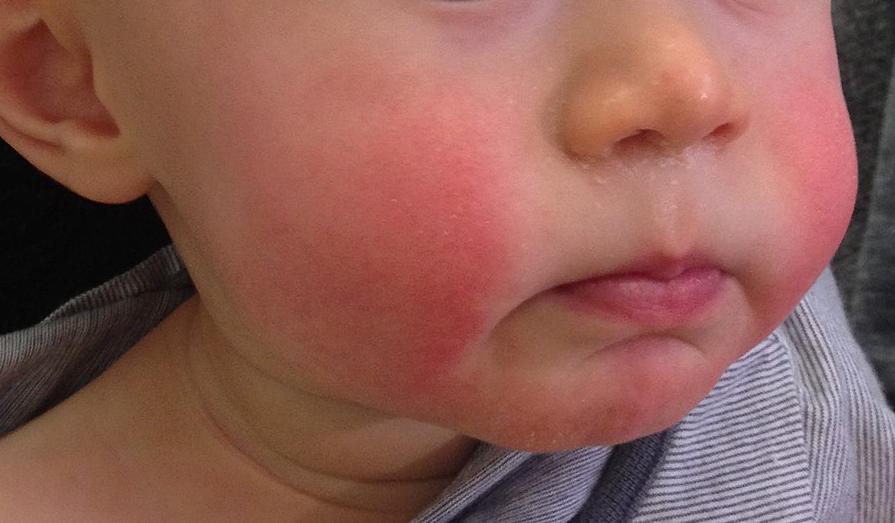
Health experts at institutions across Hamilton County are sharing the dangers of parvovirus, a virus that’s commonly found throughout the community.
According to doctors at UC Medical Center, there has been a local rise in parvovirus infections. Hamilton County Public Health is partnering with UC Medical Center and the Cincinnati Health Department to share information and help decrease the risks that this infection may pose.
A parvovirus infection is an illness caused by a virus called parvovirus B19. Also known as Fifth Disease (or erythema infectiosum), parvovirus is particularly common among children.
“Outbreaks can happen frequently among school-aged children who may present with a lacy rash — described as a “slapped cheek” appearance when it involves the face — and flu-like symptoms,” said Kara Markham, M.D., professor of obstetrics and gynecology at UC Medical Center.
“While parvovirus infections usually cause no symptoms or only mild illness, such as flu-like symptoms, rashes and joint pains, they can be serious for individuals with blood disorders or a weakened immune system,” added Grant Mussman, M.D., commissioner for the Cincinnati Health Department.
Special concern for pregnant people, fetuses and babies
People who are pregnant especially should be aware of virus exposure, experts said.
“As our local doctors note, pregnant women in the first half of their pregnancies should let their OB providers know if there is an outbreak of parvovirus in their children’s schools or if any of their children has a red, lacy rash,” said Greg Kesterman, health commissioner for Hamilton County Public Health.
The virus can affect both the pregnant person and the fetus.
“Somewhere between one-third and two-thirds of pregnant women are not immune to parvovirus at the start of pregnancy and are at risk for infection throughout gestation,” Markham said.
The Centers for Disease Control and Prevention (CDC) states that if a woman gets a parvovirus infection during pregnancy, the virus could spread to the baby. “This is not common but could cause a miscarriage,” the CDC said.
“If a woman is first exposed to parvovirus during pregnancy, the virus can cross the placenta to cause fetal infection,” Markham said. “If this occurs, the virus can temporarily affect the bone marrow of the baby, preventing the baby from producing red blood cells, resulting in anemia, and/or platelets, resulting in thrombocytopenia.”
“It is estimated that severe anemia can occur in up to 10% of babies infected prior to 20 weeks, and the condition may even be severe enough to cause fetal death,” Markham added. “However, if physicians are aware of the infection and the potential for fetal anemia, very close monitoring and appropriate treatment can be lifesaving for the baby.”
Physicians can use ultrasound to monitor for anemia and can give the baby blood if anemia is suspected. The good news is that if the fetus gets the necessary medical care through the anemia to keep him/her alive, the bone marrow will recover on its own and start to produce red blood cells and platelets again.
Babies who survive will do so without long-term issues, but the key is knowing if the mother is infected so that she can be monitored closely. Doctors can obtain blood work to determine if a pregnant woman has been exposed to parvovirus in the past. Those who have been exposed in the past will be immune, and their babies will not be at risk for anemia. However, for those who have not been exposed, their doctor can arrange ultrasound monitoring for anemia. Early diagnosis and treatment of anemia can be life saving for the baby.
Learn more about parvovirus from the CDC and the Mayo Clinic.
